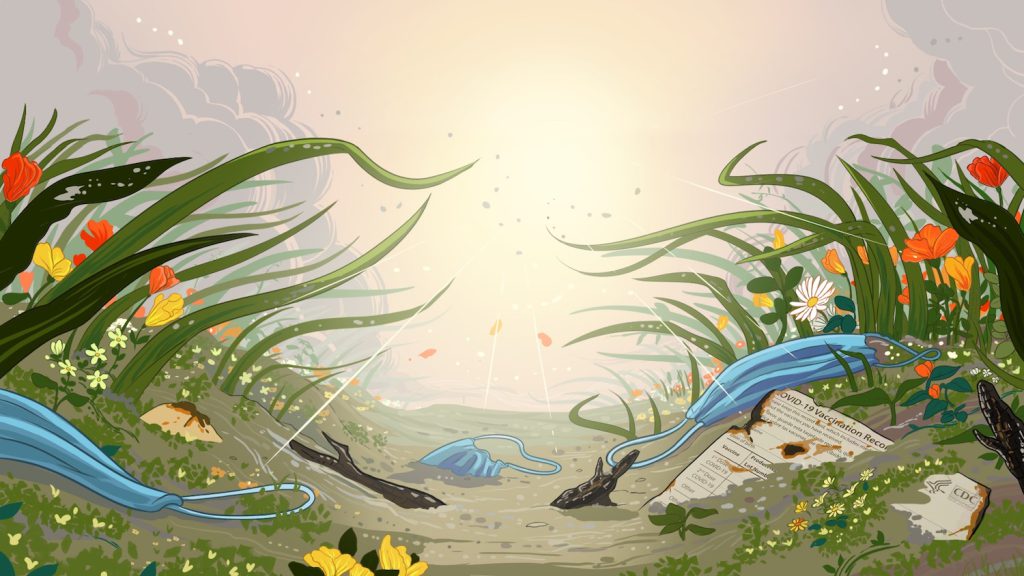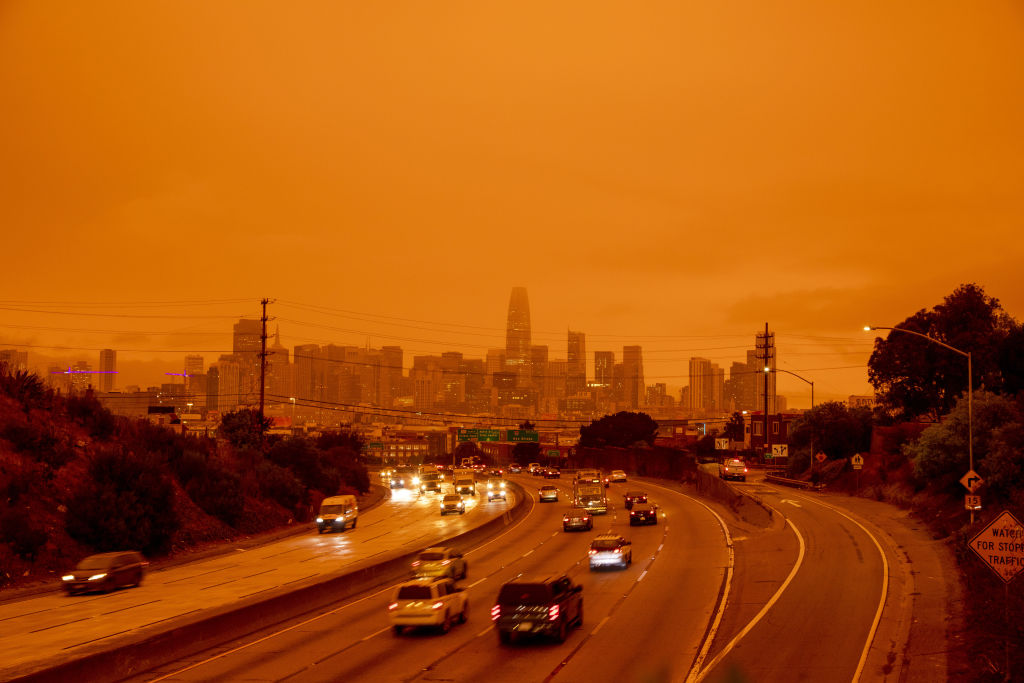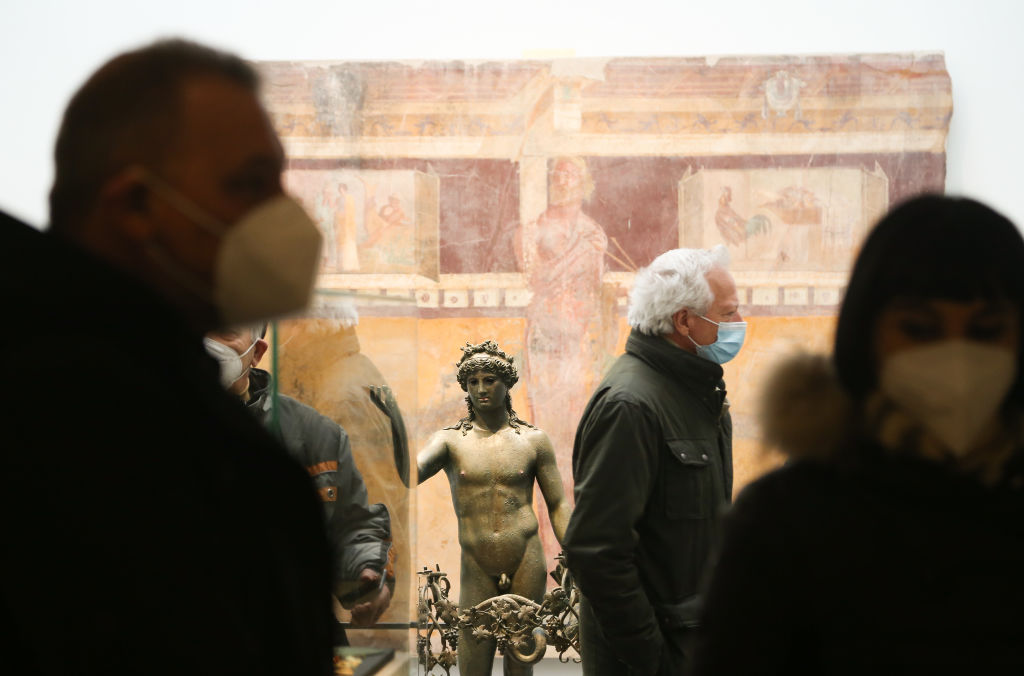An Excavation of the COVID-19 Pandemic

With over 131 million people fully vaccinated in the U.S. and numbers of new infections dropping nationwide, some have started to declare the “end” of the pandemic, despite surging cases across much of the world.
Whenever the pandemic officially ends, it will leave traces that will linger well into the future. As archaeologists know, even events in the deep past—long over and largely forgotten—continue to haunt the present.
No one knows this better than the researchers who are still sifting through the remains of Pompeii, a city consumed by a volcanic eruption in A.D. 79. In November 2020, as cases of COVID-19 surged across much of the world, two new bodies were recovered in one of the ancient villas destroyed by a shower of pumice stones, ash, and lapilli. Though they died nearly 2,000 years ago, finding them elicited an “emotional impact” even now, said Massimo Osanna, departing director of the Archaeological Park of Pompeii, in a Culture Ministry video.
I wonder what archaeologists will find when they unearth the strange world of 2020–2021, a world upended not by a volcano but by disasters of a decidedly more human ilk. I picture them carefully sifting through the remnants in the geologic layer: discarded masks, testing swabs, and sanitizer bottles; toxic ash from wildfires and pieces of homes torn apart by a barrage of hurricanes and ice storms; caution tape from shuttered schools; records of the riot at the Capitol and unarmed Black people gunned down by the police.
Archaeologists and other anthropologists have long considered the ambiguity of endings: the radioactive waste left over from nuclear war lingers in the bodies and soil of nations long after peace treaties have been signed. Landmines remain active underground, taking lives and limbs decades after soldiers have returned home. Post-traumatic stress disorder persists in the brains of soldiers and civilians alike.
When archaeologists unearth the world of 2020–2021, they will likely find more questions than answers.
It was a particularly unnerving day last summer when I found myself first speculating about the archaeological remnants of the current era. On Wednesday, September 9, the sun never rose in the San Francisco Bay Area. Smoke from wildfires blocked all light except for a faint orange glow. It was eerie, alarming, and, in a word that became almost cliché in 2020: apocalyptic. “Bay Area Skies Look Scarier Than Blade Runner 2049” read the headline of a local news outlet.
Contemporary archaeologists say the sky likely looked similar in Pompeii following the eruption of Mount Vesuvius.
I had already been thinking a lot about the lives lost abruptly in Pompeii. We weren’t overcome by the pyroclastic flows of an erupting volcano, but the early days of the COVID-19 lockdown had seemed to freeze my neighborhood in time: a schoolyard with an abandoned soccer ball, a bar with St. Patrick’s Day decorations gathering dust long into the summer, the parties never held. But on that September day, the connection to Pompeii felt less abstract; the city was actually covered in ash.
I drove with my children across a midday city lit only by streetlamps and the strange red hue that emanated from where the sun should have been. “Is it night?” my 2-year-old asked, too young to grasp the concept of time.
My 4-year-old is usually quick to answer him. She likes to be the expert. But instead, she paused and replied with a question of her own: “What do nocturnal birds do when the day doesn’t come?”
Recently, we had been reading about bats and owls, and she was obsessed with the idea of a world of wildlife that hunted and played while she slept, and that slept in the daytime while she played. “I have no idea,” I responded, and she searched the dark orange sky for clues.
People who live near active volcanoes have often observed that birds grow restless before a volcanic eruption, and some ornithologists have suggested that birds or other animals may serve as early warning signs for natural disasters. I wondered how the birds acted in Pompeii. The ones in San Francisco that day didn’t seem restless. Instead, the sky was empty. My own body felt groggy and confused by the lack of light, and my daughter and I joked about not knowing whether we were eating lunch or dinner.
Because the pandemic left me working from home, my plot in the local community garden had become my daily journey, my attempt at a rhythm. My lungs burned that September day as I walked up the steep hill to see how the smoke had affected my sunflowers. Would they be searching for the sun too?
Insights from interdisciplinary research suggest that the people of Pompeii died from extreme heat, rather than from ash exposure, as many scholars previously assumed. But I didn’t know that detail yet as I dusted the ash off my cucumber and tomato plants. The sunflowers pointed to the ground. I guess they had given up their quest for light.
The American archaeologist Wilhelmina Feemster Jashemski pioneered the field of garden archaeology in the mid-1900s in Pompeii. She applied the practice of making molds of human remains to making molds of plants. I wondered what Jashemski would find by making molds of a pandemic garden.
When archaeologists unearth the world of 2020–2021, they will likely find more questions than answers.
Some plots in my community garden had been abandoned by people scared of catching the coronavirus, and crabgrass grew wild there among the dried raspberry bushes. Other plots had begun to feed people experiencing homelessness who made shelter above the highway.
“Ash makes great garden fertilizer,” my mother told me when I texted her a photograph of tomatoes covered in white and grey specks.
Archaeologists say the ancient city of Pompeii prospered largely because its fertile black earth was enriched by prior eruptions: Olives supported wealthy farmers, and Pompeian wine—famous for the hangovers it induced—was consumed across the region. Thinking about my drooping sunflowers, I checked some gardening websites to learn more. Apparently, wood ash is high in potassium, a nutrient that encourages flowering and fruiting. It can also balance the acidity in compost.
Shuddering, I wondered whether the ash of burnt homes would have the same effect. Would next year’s plants thrive from the nutrients? Or would the toxins from the fires find their way inside the tomatoes instead of merely clinging to their dusty surfaces? It was hard to tell.
“You should get your soil tested,” my mother suggested.
What stories would my garden soil tell archaeologists of the future?
Most of those who died in Pompeii succumbed instantly. Many were buried in nearly 20 feet of tephra. Archaeologists describe the bodies they found as frozen in suspended actions, in “sleep-like stances,” and holding “pugilistic attitudes” (some with fists still raised to the sky).
How will archaeologists describe the millions of bodies felled by this pandemic? Will they find the clotted blood or the detritus of ravaged lung cells? Will they measure the enzymes of struggling livers or take note of the kidneys that failed? Will they be able to observe the disproportionate death rates of Black, Indigenous, and Latinx people? Or will these details be lost as the flesh returns to the earth, leaving only bones and dust behind?
In much of the world, the scale of daily deaths has upended traditions around memorializing and preparing the deceased for burial or cremation. Bodies are considered biohazards. Will archaeologists read the text message sent by a friend who lost a relative to the disease? They certainly won’t hear the cries of the family who was unable to say goodbye.
Like the many people across the world who have died because of the pandemic, the residents of Pompeii never awoke from their grisly deaths. But on September 10, the sun rose in San Francisco, even if the sky remained slightly brown from the haze of millions of burning trees and thousands of destroyed buildings. Eventually, the winds cleared the toxic sky, and my children could play outside again.
They were not bound by the ash of the volcano, only slowed down slightly by the masks worn to protect them from the coronavirus. “Six feet, 6 feet,” my 2-year-old sang. “I’m going to bust those germs!”
In the centuries following the eruption of Vesuvius, Pompeii and its grimly encased residents were forgotten.
It would be more than 1,000 years before a part of Pompeii was unearthed by workers digging an aqueduct for a nearby mill. Attempting to divert the River Sarno, they uncovered what appeared to be Roman wall paintings. Yet another 100 years would pass before people realized they had found the lost city of Pompeii.
Here in San Francisco, less than a year has passed since the “Day With No Sun,” as my daughter now calls it, though her fear of fires still lingers. She still likes to put her pink unicorn COVID mask over the nose of her penguin stuffie and play “virus,” but now she is also reveling in seeing her fully vaccinated grandmother for the first time in more than a year.
Over 1,000 people died in Pompeii the day the pyroclastic flows of Vesuvius surged toward town. Deaths from the California wildfires range in the dozens (although long-term health consequences could raise the numbers dramatically), while deaths from COVID-19 have surpassed 3.4 million worldwide.
Signs of hope are emerging as vaccines continue to travel around the United States in frozen vats. But now that the country is reaching some kind of “end,” I wonder what will remain and what will be buried under the soil. What ongoing disasters will still be ignored?
Will climate change continue to fuel fires so massive that their smoke blocks the sun? What will happen to the millions of children who stayed at home and played “virus” instead of going to school? Or to our society from the social inequities magnified by the disease and its externalities? Or to the hundreds of thousands of people still infected daily around the world as vaccines remain largely in the hands of wealthy countries?
Will archaeologists find us in “sleep-like stances”? Or “pugilistic attitudes,” fists raised to the sky?



























